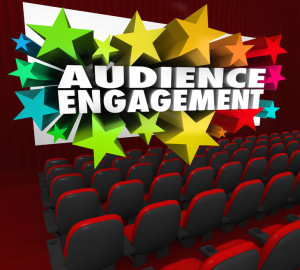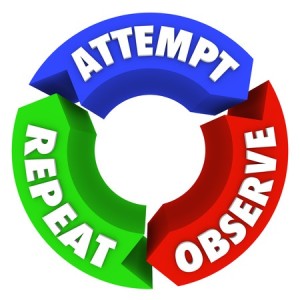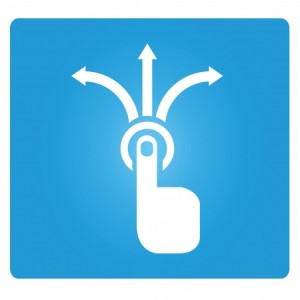Audience Engagement: 5 Steps to Greater Understanding and Measurement
Digital has made the world of content and services highly competitive with the ease of publishing and sharing.

A content creation business, a subject matter expert or a membership/subscriber based organization now contends with a highly fragmented market where current or prospect customers can gain information and therefore knowledge and form an opinion at the swipe of a screen or a click of a few keystrokes.
A highly fragmented market where customer preferences have changed and where reality and perception of authority and credibility are turned upside down.
The fragmentation has an impact on your customer retention and can be a major cause of voluntary churn.
Customers (your current or target audience) want long-term relationships.
Customers want to trust businesses more than ever.
Customers want you to make them feel special and connected.
 Your market is very different than it was just a few short years ago.
Your market is very different than it was just a few short years ago.
You may scratch your head about what you need to do to maintain your business, your revenue, your authority and your credibility.
Can you grow into being the curator, the partner and/or the trusted provider?
Can you be the relationship-based source for your audience (customers) and those you hope to reach?
Lets highlight briefly what is different in this environment:
What is different?
- Growing world of content (free and paid) and the Google effect where Google first page results are taken as primary source.
- Challenges to Authority and Credibility exist given the quantity of content published and available on the web.
- Fragmentation of market and consumer preferences given choices and demographical shifts.
- Journeys and Life Stages are changing and evolving as demographics shift.
- Customers want and expect connected and cohesive multi-channel interaction with your business.
- Changes in perception of value proposition and content.
What is the difference between Audience Development and Audience Engagement?
Audience Development (AD) focuses on identifying new customers or members who might benefit from what you have to offer. Often Audience Development is a short-term strategy focused on acquisition or marketing that seeks to increase customers or prospects. Think increasing circulation numbers or sales. Retention is a bonus but not necessarily an immediate focus.
Audience Engagement (AE) is a long-term strategy to build relationships, to build community, entice conversation and participation which leads to loyalty, retention, and customer identification with the brand. AE involves everyone at an organization from content creator and publisher to customer service staff and across the multiple channels of possible engagement and interaction.
What do you need to do and how can you do it?
I have said this many times in my presentations, speaking engagements, councils and via this blog: There must be a measurement strategy for any digital strategy, audience development strategy, content strategy, social strategy and any audience engagement strategy.
You must be on your A game and constantly measure to determine if your actions are making an impact. The World is moving so quickly and change is constant. You need to know if you are meeting the relationship and engagement demands of your audiences in the immediate.
The Five Steps
There are five steps you can take to establish an understanding of your audiences, create engagement, build the relationship and lastly measure performance.
Simply it is wash, rinse and repeat in a continuous cycle.
Each step should focus on “who” you are and what your “goals” are. You aren’t another organization, business or publisher. You are unique in what you offer and who you are. Comparison to how and where others have been successful is not productive. What works for one may not work for someone else in the highly fragmented and changed marketplace.
The First Step: Planning + Personas and Segments
Know your audience segments and personas. The concept and focus on personas has been around for a long time particularly in the digital space and used when building and designing content (information architecture and ontologies) for websites.
A Persona is a descriptive profile of the members or desired members of your target audience.
Questions you want to be asking are:
Who are they?
What are their demographics and psychographics?
What do they care about?
Based on their demographics, what are their life stages?
How are they interacting with you now? What feedback have they shared?
How does their expected journey differ from the one you are offering?
Describe and answer as much as possible using available data.
Seek to understand the who, what, when, where and why for the relationship they aspire to have with you, your content and your business.
Use the profiles to develop audience segments and constantly refine as you ingest feedback, seek new data and test your engagement tactics.
The results of the exercise allow you to an opportunity to create a holistic and segmented vision while asking the following questions:
Who are you speaking to?
What do they really care about that is different than what I thought?
What affinities do they have?
What terminology used in content do they respond to?
How do they think about us in context of their life stage?
You can then match your strategies and goals with your audience’s expectations of you and develop your audience engagement plan. The plan should be both strategic and tactical. Tactics will be a focus of another blog post.
As in the wash and rinse cycle, this is indeed a continuous cycle and circle of activity where you are testing results and validating findings moving through each step.
Step Two: Development + Content Creation and Management
In step two you are taking your plans in conjunction with your new knowledge and moving to execution. It is time to develop and put into action your strategies and tactics. As you create engagement and begin to see the discourse, the connection and the conversation, start documenting the results.
What is your audience talking about?
What topics/themes drive discussion?
When are they most likely to have the discussion?
Are there any date driven or seasonality impacts?
What content seems to be resonating? Do I know why?
What changed or new feedback are we receiving?
Has the interaction, engagement and sharing of our content changed?
At this point you are building a significant amount of data leading to insights about your audiences, the level of engagement with you and gaining knowledge about the ways and types of relationships they seek with your content, your brand and your business. It is time to begin putting all of the data and the new knowledge and insights to use.
Step Three: Optimization + Search, Social and Usability
In step three you are bringing your new knowledge, matching it to your newly documented audience intelligence (personas and segments), applying against your plans and determining where you need to optimize or adjust. The optimization and adjustment includes physical and digital (virtual) elements.
Lets start with content:
How are the topics being discussed?
Is the content being read and are there actions they are taking after consuming (sharing, saving, etc)?
What terminology is being used in the discussion? Does it match the terminology used in my content? Am I unnecessarily creating confusion and innuendo?
How is the audience searching? What terms are they using?
What specific questions are being asked?
Now to Function and Usability:
How are they moving through the content and are they following the path I expected?
Am I seeing opportunities to created greater ease of use and access?
Are they finding how to share, discuss or provide feedback?
Step Four: Distribution and Amplification
Here is where it may get a bit complicated but it is to your advantage to gain insight and understanding. A website, your digital representation of your business, is an island where the Internet is made up of billions of islands. Your current and potentials readers, members, subscribers or customers may be interacting and engaging on a variety of different islands. Why sit back passively and not know where and what they are doing?
Conduct some research of known or likely competitors, join a few communities or discussions and determine where your topics, your type of content, your subject matter is being discussed. Look for intelligence in freely available or paid reports to determine what sites your audience is visiting (social listening and mining of Twitter or Facebook is great for exposing this type of information). Are certain visitors (authors, loud participants) influential? Is their engagement resulting in more discussion and conversation?
Data is everywhere and collected more than you realize. To learn more please read my Privacy is Situational blog post.
 You can use the findings and apply them to what you are already doing and see if any adjustments are necessary. Most often you will find a few things you could change or alter to generate more discussion and deepen the relationship.
You can use the findings and apply them to what you are already doing and see if any adjustments are necessary. Most often you will find a few things you could change or alter to generate more discussion and deepen the relationship.
You also will have the opportunity to determine where you may need to distribute and amplify. Given all websites are islands, there are sites where you may want to ensure your content is distributed and available.
The distribution increases the odds your content will get seen and engagement will result. You may already be amplifying but you can increase your results by allowing your audiences to amplify for you.
Step Five: Engagement Measurement
I mentioned earlier that the five steps are really a cycle. The last step in the cycle is creating and using a measurement strategy. The previous four steps require you to collect objective and subjective data and use that data via analytic reports or dashboards to determine your performance.
The numeric or other evaluation criteria you should use is based on who you are. Remember, you are unique and how engagement and engagement success is defined should be unique to you.
Questions you should ask during measurement:
Is you audience engaged?
If so, how are they engaged?
Is what I am doing working?
Do I need to change anything?
Using data and analytics allows you to measure engagement, amplification and your reach.
Using data and determining results and impacts can demonstrate if you are successful in creating an engaging relationship with your audience.
Data and analytics can also bring forth intelligence to show the impact on search, web traffic, retention, and sales.
For more information on content, engagement, consumption and amplification analytics and measures please see my 3 part blog series “Demystifying Analytics”. All of the answers are there.
I hope the discussion of audience engagement and the 5 steps helps you in using audience engagement strategies and tactics in the digital and multi-channel realm. I will share strategies for multi channel engagement in the next blog post.
Download our Audience Engagement and Measurement Handout: 2040DigitalAudienceEngagement
As always we are here to help you. Reach out to us via email or via our contact form.





